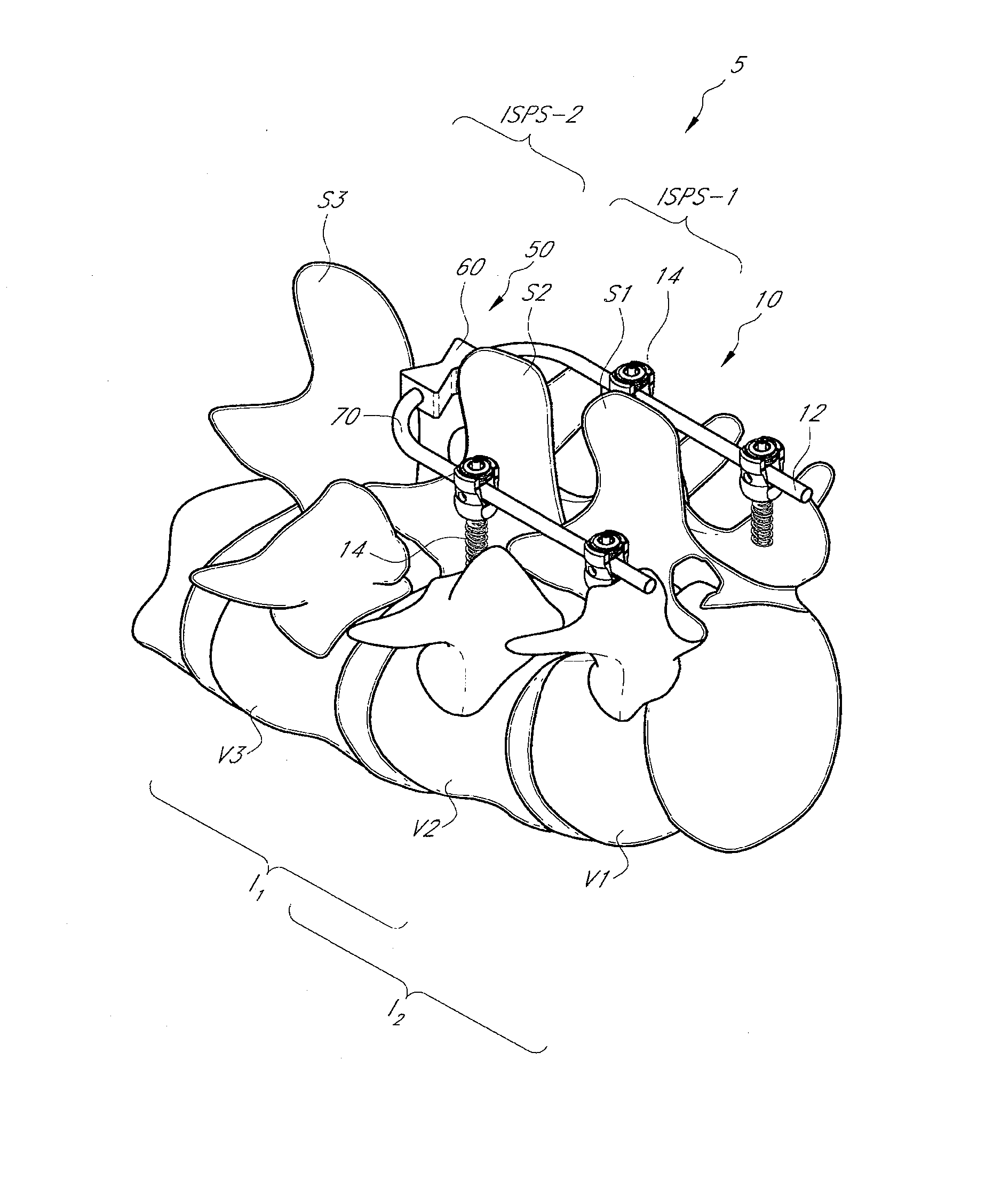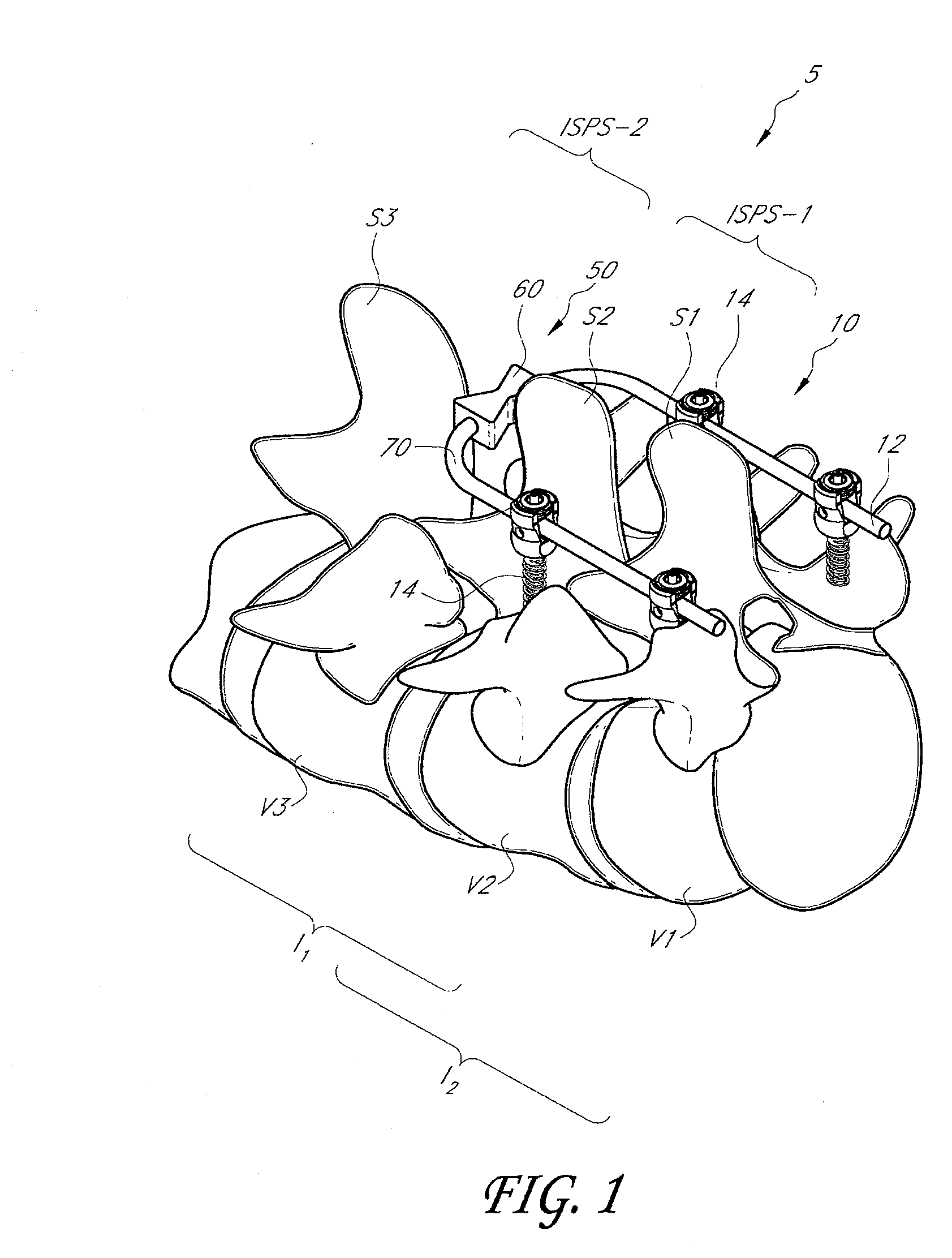Systems and methods for reducing adjacent level disc disease
- Summary
- Abstract
- Description
- Claims
- Application Information
AI Technical Summary
Benefits of technology
Problems solved by technology
Method used
Image
Examples
Embodiment Construction
[0039] As should be understood in view of the following detailed description, this application is primarily directed to apparatuses and methods for treating the spine of a patient. The apparatuses described below can be configured to provide a variety of treatments to reduce or delay degenerative disc disease (DDD) in or near the spine of a patient. In particular, various embodiments described herein below can include devices for fusion, fixation, limiting motion, or providing dynamic support of one or more levels of the spine and structures adjacent to or near the spine. Various methods are disclosed for working with these apparatuses. The apparatuses and methods described enable a surgeon to perform a wide variety of methods of treatment for reducing or delaying adjacent level DDD of a patient as described herein. Such apparatuses can be deployed through an access device that at least partially defines an access path through otherwise naturally continuous tissue from outside the p...
PUM
 Login to View More
Login to View More Abstract
Description
Claims
Application Information
 Login to View More
Login to View More - R&D
- Intellectual Property
- Life Sciences
- Materials
- Tech Scout
- Unparalleled Data Quality
- Higher Quality Content
- 60% Fewer Hallucinations
Browse by: Latest US Patents, China's latest patents, Technical Efficacy Thesaurus, Application Domain, Technology Topic, Popular Technical Reports.
© 2025 PatSnap. All rights reserved.Legal|Privacy policy|Modern Slavery Act Transparency Statement|Sitemap|About US| Contact US: help@patsnap.com



